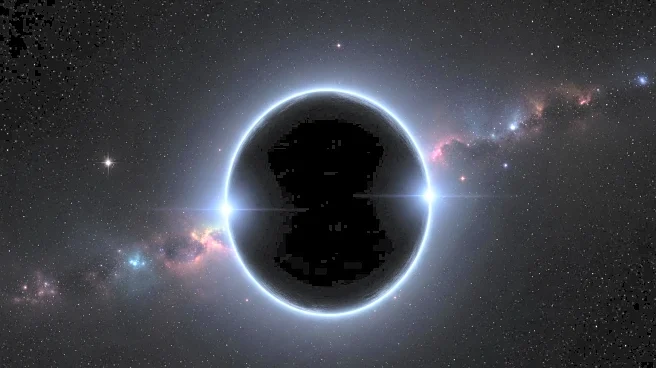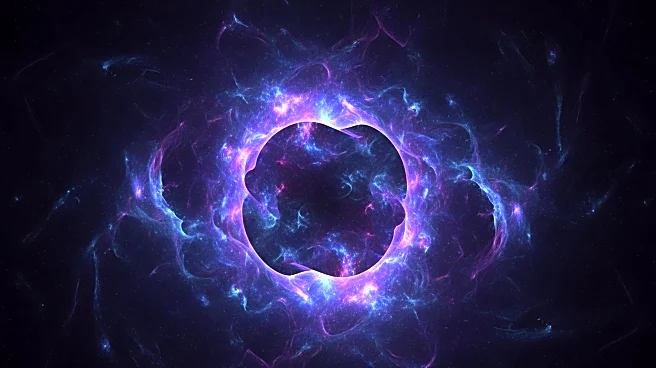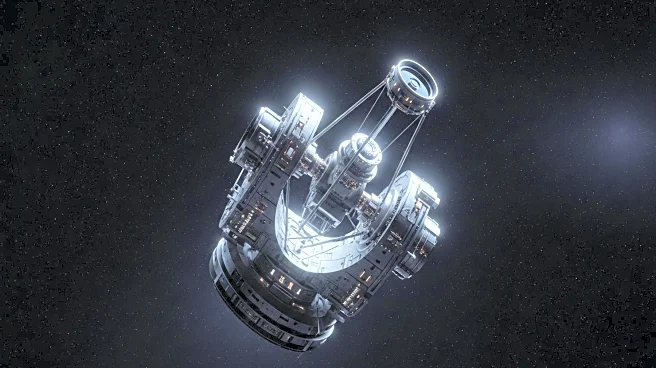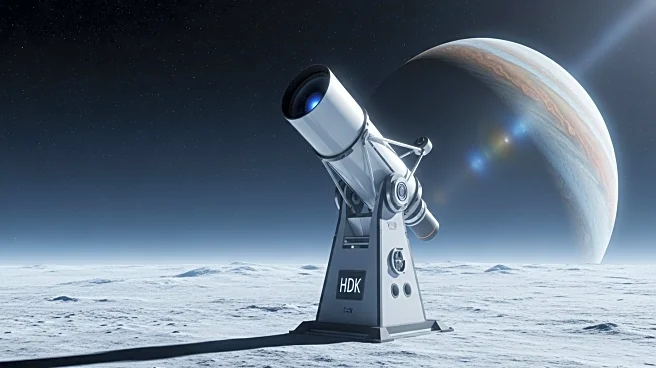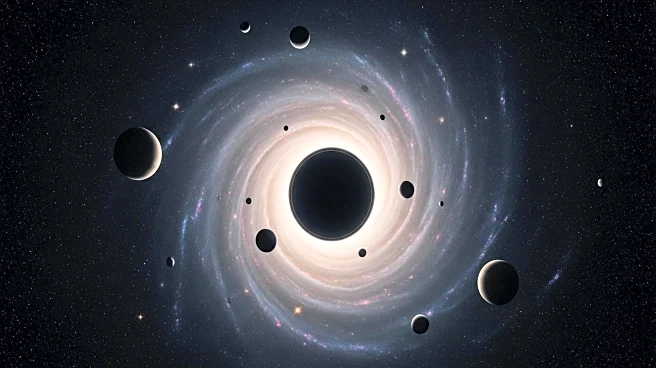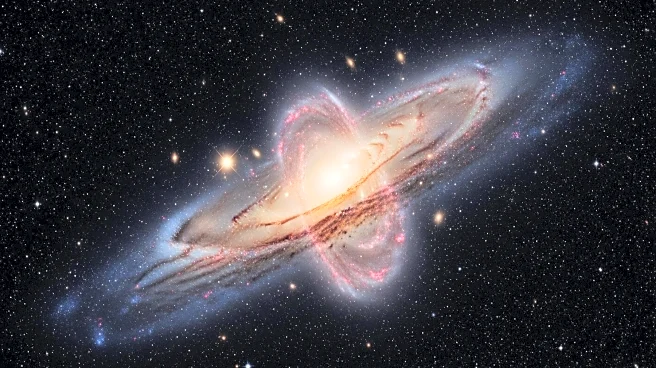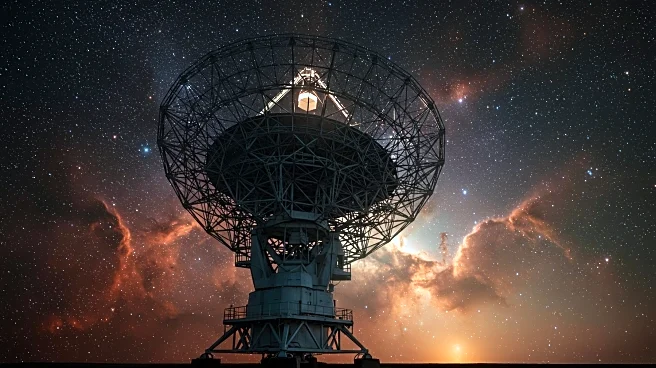What is the story about?
What's Happening?
Astrophysicists have proposed the existence of 'dark dwarfs,' a new type of star-like object that may be powered by dark matter rather than nuclear fusion. These objects could be located near the center of the Milky Way and are theorized to glow indefinitely by annihilating dark matter particles. The concept suggests that dark matter could be trapped inside young stars, transforming them into stable, long-lived entities. This theory is based on the presence of Weakly Interacting Massive Particles (WIMPs), which could provide the energy needed for these stars to remain luminous.
Why It's Important?
The discovery of dark dwarfs could offer significant insights into the nature of dark matter, a substance that constitutes a large portion of the universe but remains largely mysterious. Identifying these objects would enhance our understanding of cosmic phenomena and potentially lead to breakthroughs in particle physics. The ability to detect dark dwarfs could also advance observational astronomy, providing new methods to study the universe's composition and the behavior of dark matter.
What's Next?
Researchers suggest that telescopes like the James Webb Space Telescope could be instrumental in detecting dark dwarfs, particularly by focusing on the galactic center. Future studies may involve statistical analysis of similar objects to identify potential dark dwarfs. The confirmation of even one dark dwarf would be a pivotal step in unraveling the mysteries of dark matter and its role in the universe.
Beyond the Headlines
The proposal of dark dwarfs challenges existing paradigms in astrophysics and opens new avenues for research into the fundamental properties of dark matter. It underscores the importance of interdisciplinary collaboration in advancing scientific knowledge and highlights the potential for innovative approaches to solving longstanding cosmic mysteries.
AI Generated Content
Do you find this article useful?
